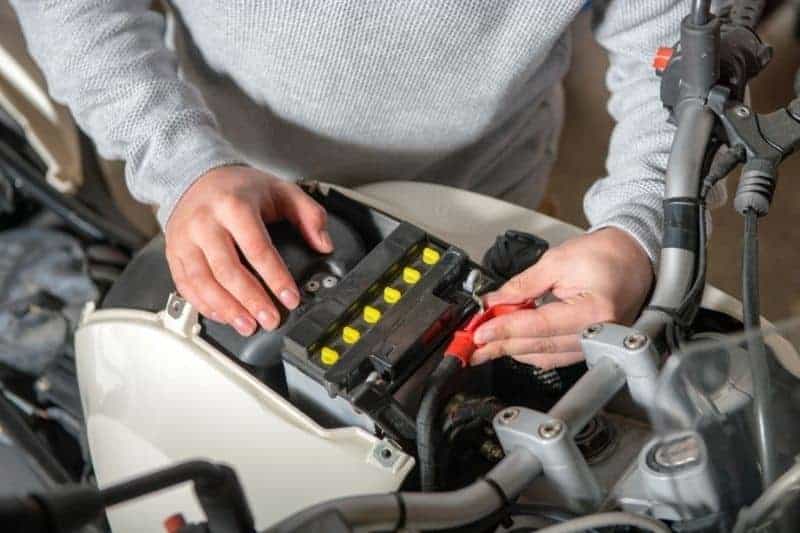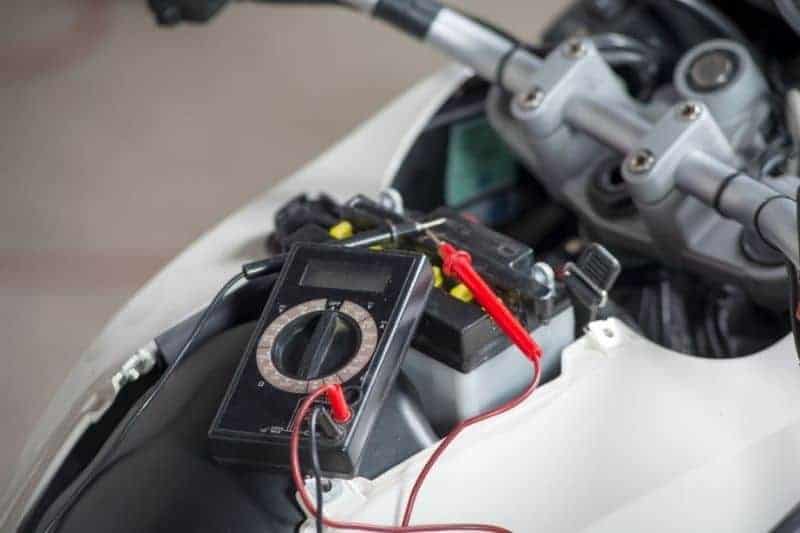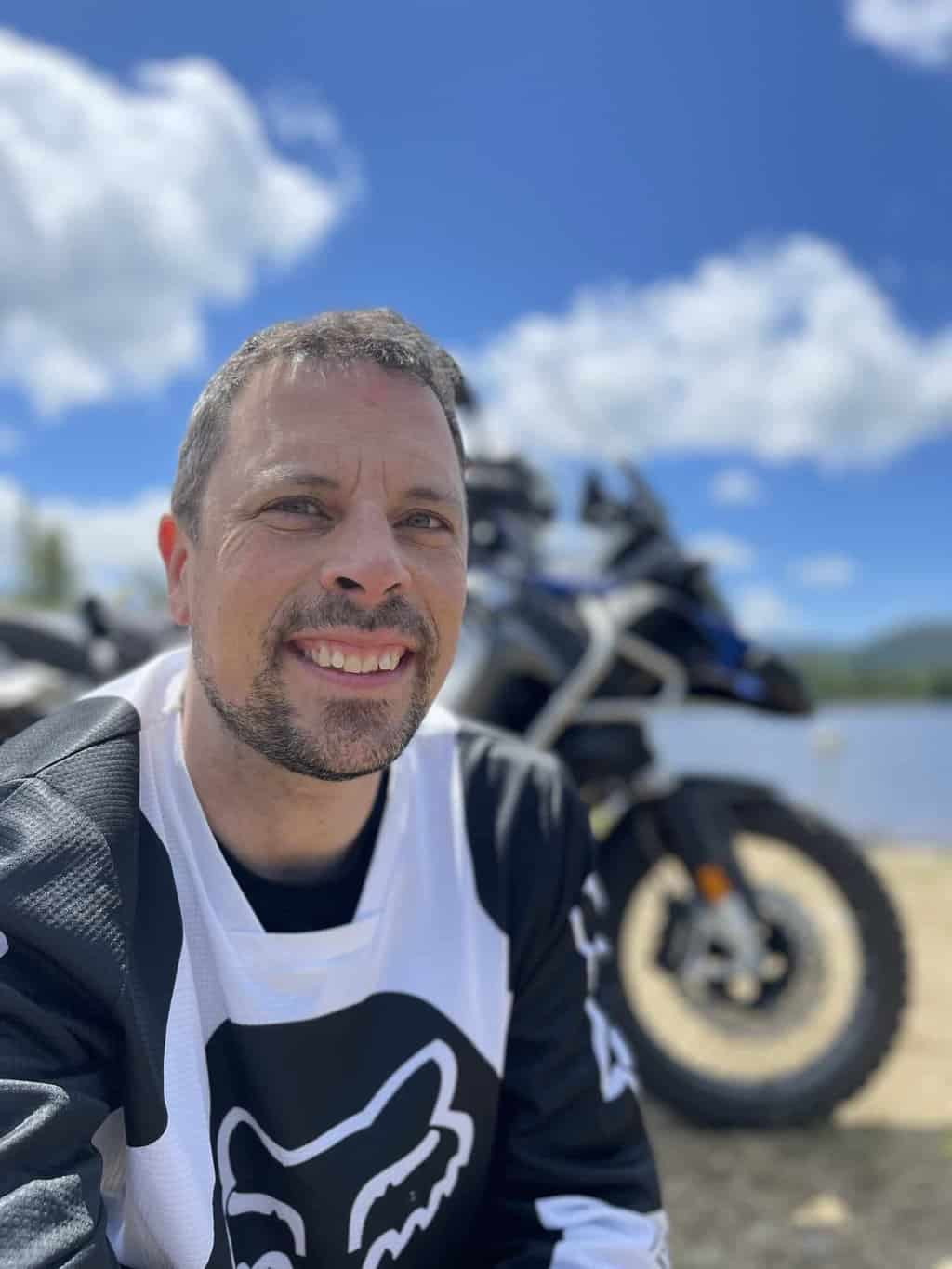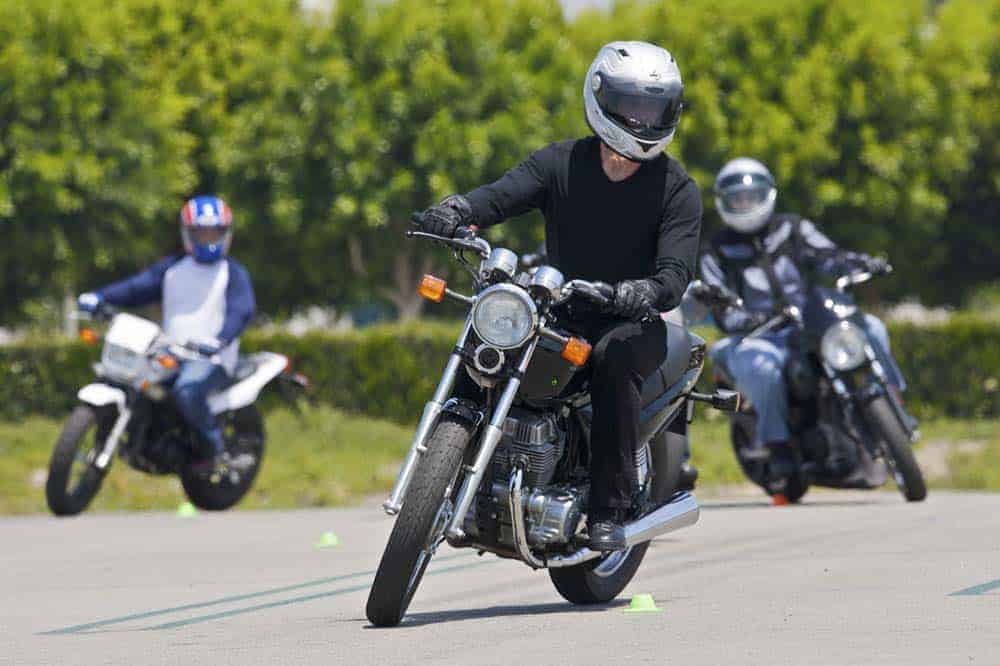Ready for your next motorcycle adventure? Check out this article and kick-start your next journey! Starting your bike can seem daunting at first, but with some basic knowledge and understanding of how it works, anyone can jump-start their machine. We’ll explain all the ways to get started safely, including different methods of starting up your engine, as well as the necessary tools you need in order to keep everything running smoothly. So, let’s jump-start that motorcycle and see what we can do.
Table of Contents

Check the motorcycle
Battery
Before checking everywhere, it’s important to inspect some key elements. First and foremost is the connection – make sure all of the wires are securely connected and that nothing has come loose over time. Next, take a look at the physical battery – check for corrosion or any signs of damage. If you find corrosion, you can sand the poles with sandpaper. If there is too much corrosion or dust, you can wash the poles with a brush and some baking soda. Wen checking the battery, you can take a voltmeter to check the voltage between the pole, it’s a easy way to see the level of charges. Refer to the table, if the voltage is under 12.0, you probably need more juice to start.
| Voltage | level of charge |
| 12.7 | 100% |
| 12.6 | 90% |
| 12.5 | 80% |
| 12.3 | 70% |
| 12.1 | 60% |
| 12.0 | 50% |
| 11,9 | 40% |
| 11,7 | 30% |
| 11,5 | 20% |
| 11,3 | 10% |
Fuel and air
The fuel system should also be inspected to ensure everything is working correctly. After that, move onto the air filter; if it’s dirty or clogged up, replace it as soon as possible. Finally, spark plugs should be checked, too; they can become worn out over time, so make sure they’re in good condition before hitting the road.
What your motorcycle needs to start is air, fuel and a spark. Keep it simple when checking everything. If you have those three components, something will happen.
A different way to start
Jump Start with Another Motorcycle or Car
Jump-starting a motorbike with another vehicle is effective when lacking alternative resources. All you need is another vehicle, some jumper cables, and an understanding of the process. The key here is to make sure that both vehicles are turned off before connecting the cables. Once they’re connected, start the working vehicle first and then try to start yours—if all goes well, it should fire right up.
Jump Start with Jump Starter
If you’re looking for something more portable than a car or truck battery but still want to jump-start your bike without having to rely on someone else’s ride, then a jump starter might be just what you need. This tool can easily fit in most saddlebags or backpacks and will provide enough juice for your engine when it needs it most. Ensure that you exercise due caution when utilizing the jump starter so as to avoid any harm to either the bike or the device itself. Simply connect the Red wire on the positive pole of your battery and the black to the frame or the negative (Aluminum is not okay to plug your negative because it’s not conductive.).
Bump Start
This one requires no additional tools beyond what comes standard on your motorcycle—just yourself. If there’s enough momentum behind it (and depending on your bike), pushing down hard enough on the bike while simultaneously popping out the clutch lever may be all that’s needed for ignition; however, this method can also cause damage if done incorrectly, so proceed with caution. For a better result, you need to go to approximately 25 Km/h. Be sure to be in second or third speed, there is usually to much restriction on the first speed to start correctly. If the wheel spin when you release the clutch, just lift your butt and sit rapidly on the seat while letting go of the clutch to put more pressure on the back tire. It’s also easier to do it while getting downhill just saying….
Pull Start
You need two bikes and a towing strap or rope for the pull-start option. Be very cautious with this method, if the rope or the strap get stuck on the back wheel of the towing bike, you will see things can go from worst to batsh**t crazy in no time. So, the first motorcycle is towing the broken motorcycle. When the bike reaches approximately 25 Km/h, let go of the towing strap and release the clutch and voila – time to hit those open roads. The same principles of the bump start method apply here: third gear and pressure on the back tire.
Wheel On Wheel Start
Like bump starting, wheel-on-wheel starting necessitates two riders placing their bikes side by side in a facing away orientation with the wheels touching. The subsequent ignition is then initiated through the same pop clutch technique previously mentioned; however, it is of utmost importance that both drivers are acutely aware and mindful of the potential for grave consequences should coordination between them be off even slightly. Therefore, great caution must be exercised when attempting such maneuvers. But hey, if the only option is walking back home…We love to live dangerously…Be sure to film it if you try this one, and send me the video if you make it back to safety.
Rope Pull Start
Last but certainly not least, we have rope pulling – probably one of the oldest methods used for getting engines fired up prior to the invention of modern-day starters/jumpers, etcetera. This procedure involves attaching either end of a long-length cordage around the motorcycle tire before manually tugging away until the desired revolutions per minute are achieved. Sounds easy enough right? Well, yes, indeed, provided that the user understands the importance of proper form execution; otherwise, said task becomes much harder than originally anticipated. This one also may be worth a video.
Jump Start with Another Motorcycle or Car:
Jump-starting a motorcycle is the quickest and most convenient way to start it. All you need is another vehicle with a charged battery and some jumper cables. Before starting, ensure that you take the necessary precautions for safety. First, make sure both vehicles are in neutral and not touching each other. Connect one end of the red cable to the positive terminal on your dead battery, then connect the other end of that same cable to the positive terminal on your donor vehicle’s battery. Then attach one end of the black cable to the negative terminal on your donor vehicle’s battery, followed by attaching its other end onto an unpainted metal surface (like a bolt head) away from any moving parts on your bike. Now start up your donor car or motorcycle first, wait about 30 seconds for them both to charge up, and then try starting yours.
From bump starting to jump-start, there are many different ways to start a motorcycle.

Start Your Motorcycle
Once started, let the engine idle for at least five minutes so it can warm up properly before taking off. During this time, take note of how well it runs by listening for unusual noises or feeling any vibrations from misfires or other issues with performance. Also, check if your alternator is charging correctly by checking voltage readings with a multimeter; this will help prevent battery failure during long rides away from home base where recharging isn’t possible.
Finally, test ride around your neighborhood just enough so that you get familiarized with its power delivery characteristics, handling capabilities, acceleration patterns and braking response. This will give you confidence in knowing that your bike is correct now. Additionally, having tools like a tire pressure gauge and basic repair kits handy ensures preparedness against minor breakdowns and flat tires during long journeys into remote areas.
Time to hit the road and check out your bike’s performance.
Tools you need
When it comes to adventure motorcycling, having the right tools on hand can make a huge difference. It’s important to have the basics like a battery tender, battery charger and jump starter in your toolkit. A voltmeter is a must-have for any adventure motorcyclist, as it can be used to pinpoint any electrical issues while out on the road.
In addition to these basic items, there are some other items that should be included in your emergency kit, such as fuses, electrical wires, a mini voltmeter, spare spark plugs, straps, and wire cutters. Having a set of these components on hand could be the difference between being marooned at the roadside or not if something happens to your bike.
It’s also wise to carry a few extra tools for those unexpected moments when something needs fixing or replacing along the way – like tire irons and patches for flat tires or Allen wrenches for minor adjustments and repairs. These tools can come in handy when trying to get back home safely after an off-road excursion.
Finally, always remember that having proper maintenance supplies on board is key; oil filters and air filters should be checked regularly so they don’t fail while out riding – nothing worse than running low on oil miles away from civilization. Therefore, be sure to equip yourself before venturing off into the unknown.
Here are some tools I recommend because I have tried them and know they are working well and for a long time.
Noco Boost Plus Jump starter

Noco battery tender both small and handy

Noco Battery Tender/Charger More powerful

Small Voltmeter for your toolbag

Noco wire plug

If you already have SAE plugs

FAQs in Relation to How to Jump Start a Motorcycle
How do you start a motorcycle with a dead battery?
Connect the battery of another vehicle to your bike’s terminals with both engines off for jump-starting. Make sure both vehicles are turned off before doing this. Once connected, start the donor vehicle and let it run for several minutes. Then try starting your motorcycle; if successful, keep running until the engine is warm enough to idle without assistance from the other car. If unsuccessful, disconnect and try again after allowing both batteries to rest for 10-15 minutes. With some effort and caution, you should be able to get your motorcycle journey back on the road.
Can I jump-start my motorcycle with a car?
Yes, you can jump-start your motorcycle with a car. However, it is important to take the necessary precautions when doing so. Make sure both vehicles are in neutral and that the cables are properly connected before attempting to start either vehicle. Additionally, never attempt to jump-start a flooded engine or one that has been damaged by water or other elements, as this could cause serious damage to both vehicles. Lastly, be sure to disconnect the cables once the motorcycle starts and allow it to idle for several minutes before riding away.
Can you jump-start a motorcycle with a car charger?
Yes, it is possible to jump-start a motorcycle with a car charger. Yet, before attempting to jump-start a motorcycle with a car charger, one must be sure to take certain precautions into account. Prior to jumping a motorcycle with an automobile charger, it is imperative that the car battery has sufficient energy to supply the voltage and amperage requisite for kick-starting the bike’s starter motor. Second, you should use jumper cables specifically designed for motorcycles or other vehicles with small batteries. Finally, always make sure that both vehicles are in neutral gear and their ignitions are off before connecting them together. Jump starting a motorcycle with a car charger can be done successfully if all of these precautions are followed carefully.
Can you jump start a motorcycle by pushing it?
No, it is not possible to jump start a motorcycle by pushing it. The real expression is Bump start…He He He! Yeap, even heavy bike can be started bu pushing it. I have often start my big old Harley by going down hill or pushing it…It just need a lot of sweat it you are on the flat and alone.
Conclusion
Congratulations. You have just learned how to jump-start a motorcycle. With the right tools and knowledge, you can now confidently get your adventure motorcycling started in no time. When working with any electrical system on your motorcycle, always be sure to take safety measures and keep all parts in good condition for the best possible performance. It’s time to embark on the journey and savour the ride!
Are you an adventure motorcyclist looking for a way to jump-start your ride? Look no further! YourmotoBro is here to provide the tools and resources needed to get back on the road. With our comprehensive guide, we’ll help make sure that any technical difficulties are solved quickly and easily. Don’t let a dead battery keep you from enjoying your next journey – join us today and discover how easy it can be to get back in gear!

Meet Simon, the 46-year-old aficionado behind YourMotoBro. With a lifelong passion ignited by motocross dreams and a Canadian Tire bicycle, Simon’s journey has been nothing short of extraordinary. From coaching underwater hockey to mastering muddy terrains, he’s an authority in thrill and adventure. Certified as an Off-Road Vehicle Excursion Guide and trained in Wilderness First Aid, Simon’s love for bikes is as diverse as his collection—from a robust BMW GSA R1200 to the memories of a Harley Davidson Night Train. By day a respected telephony consultant, by night a motorcycle maestro, Simon’s tales are a blend of expertise, resilience, and undying passion. ?️✨
